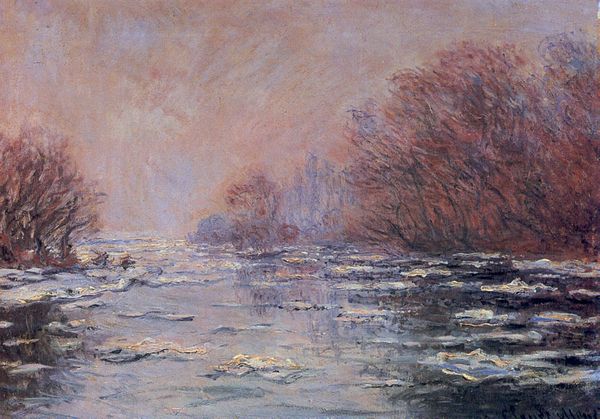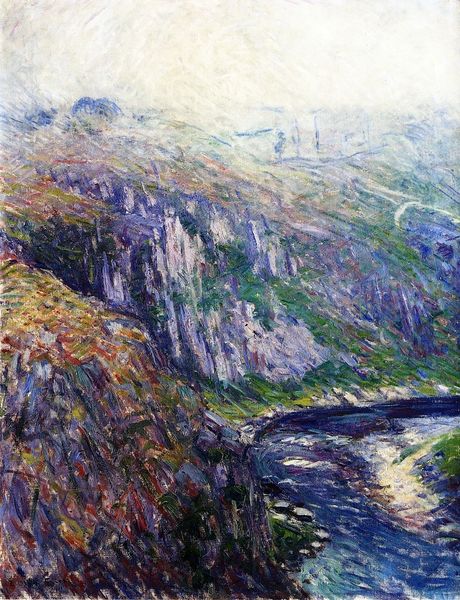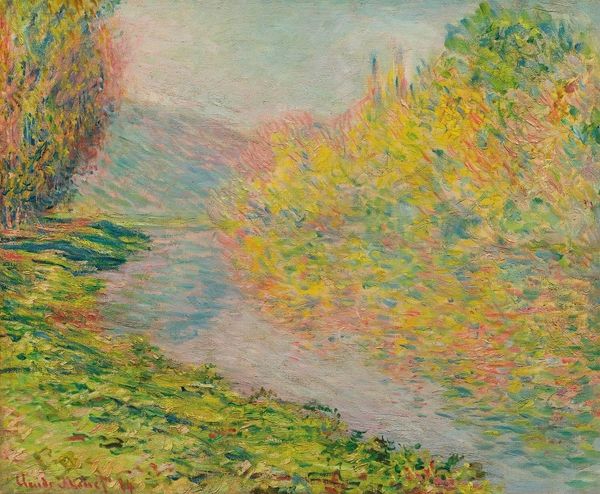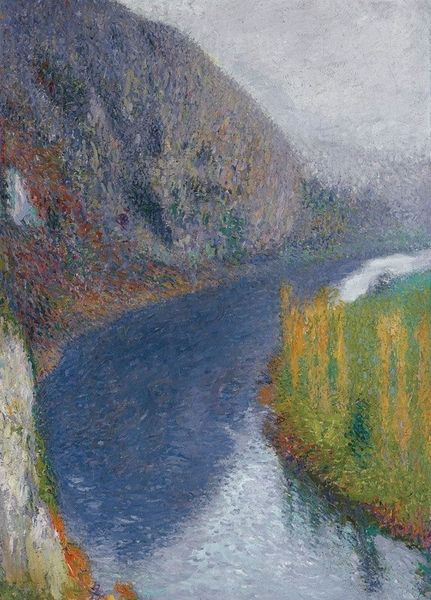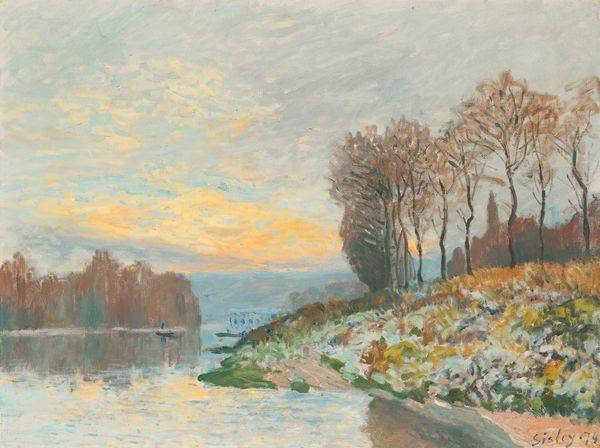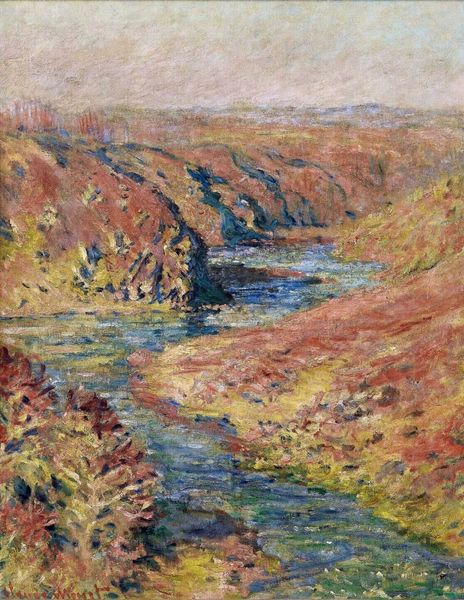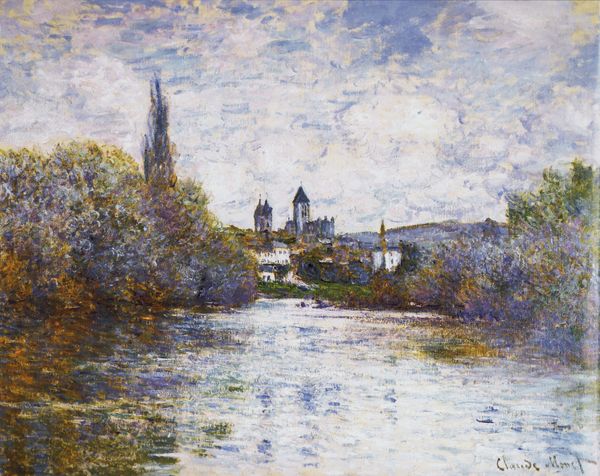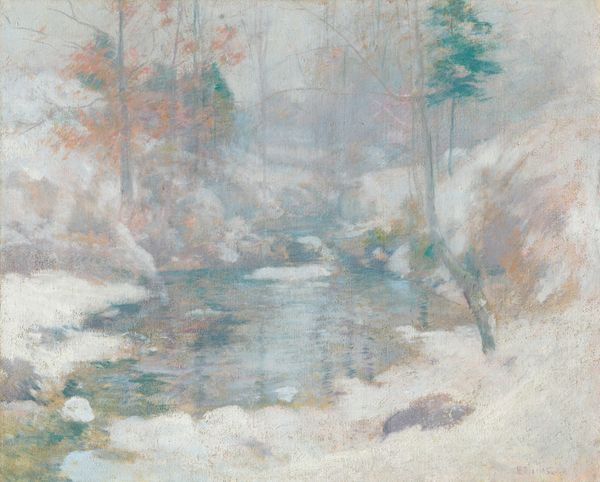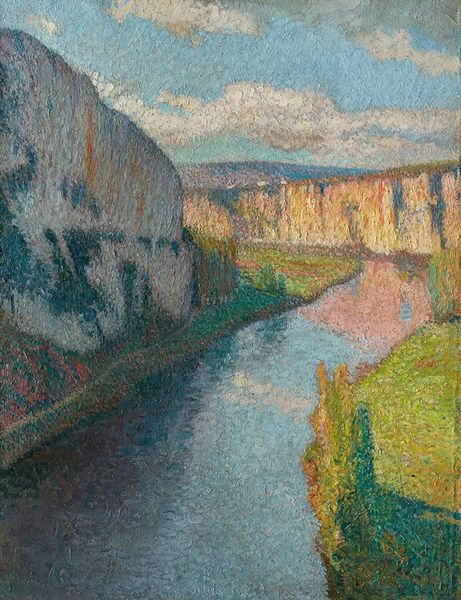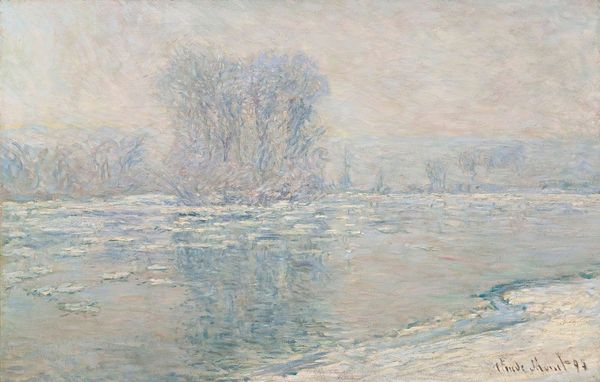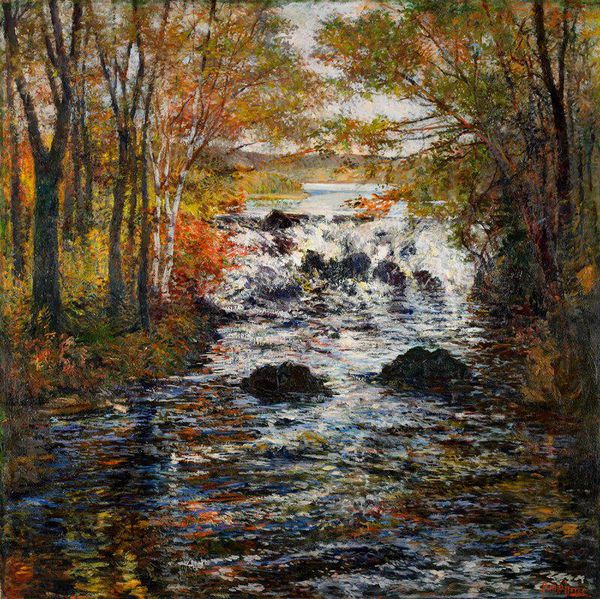
Dimensions: 45.7 x 635 cm
Copyright: Public domain
Curator: Good morning. We’re standing before Ernest Lawson's “The Waterfall, Shore's Mill, Tennessee,” created around 1910. It’s an oil painting, thick with texture, full of the spirit of plein air. What strikes you about it right off? Editor: It feels melancholic, doesn’t it? Almost monochromatic, all soft blues and greys. It’s not the vibrant, celebratory waterfall one might expect. More like a quiet observation. Curator: Lawson often sought out these slightly overlooked spots, turning what others might see as ordinary into something poetic. He wasn't just painting a waterfall; he was capturing a feeling, a mood tied to the land itself. You have to wonder, though, what drew him specifically to this scene? Editor: Knowing Lawson's background as a member of The Eight, known for depicting urban realism and social issues, I wonder if there’s a connection here. This seemingly idyllic scene could be viewed as a commentary on industrial encroachment into natural spaces, a subtle lament for a vanishing wilderness. Or perhaps even reflecting on the labour enacted at Shore's Mill. Curator: Hmm, I can see that. He wasn't afraid to show the gritty side of life in his urban landscapes, but I always felt his landscapes like these were more about a personal communion with nature. Look at how he applies the paint, thick and almost clumsy, yet somehow capturing the light on the water perfectly. It’s impressionistic but also has a rawness, a sort of determined plainness that feels uniquely American. Editor: And isn’t that "plainness" in itself a socio-political statement? By choosing such unassuming scenes, the artist draws attention to the beauty and dignity inherent in the everyday. There’s a quiet radicalism in that, an assertion that beauty doesn’t reside solely in grandeur. Who is deciding which scenes get painted in the first place? What social forces decide what "beauty" even means? Curator: Well put! I think Lawson would have liked your reading of that. It's funny how art, even a seemingly straightforward landscape, can hold so much more than just what's on the surface. Editor: Exactly. Looking closer at this particular landscape through that lens also suggests considering the unseen histories inherent in the landscape. Whose labour fueled this Mill and what histories were overlooked in the idyllic scene that Lawson captures. Curator: A constant invitation to engage, discover, question... Perhaps that is its lasting power. Editor: Indeed. It reminds us that even the most tranquil scenes can carry a multitude of stories, if only we take the time to listen.
Comments
No comments
Be the first to comment and join the conversation on the ultimate creative platform.
